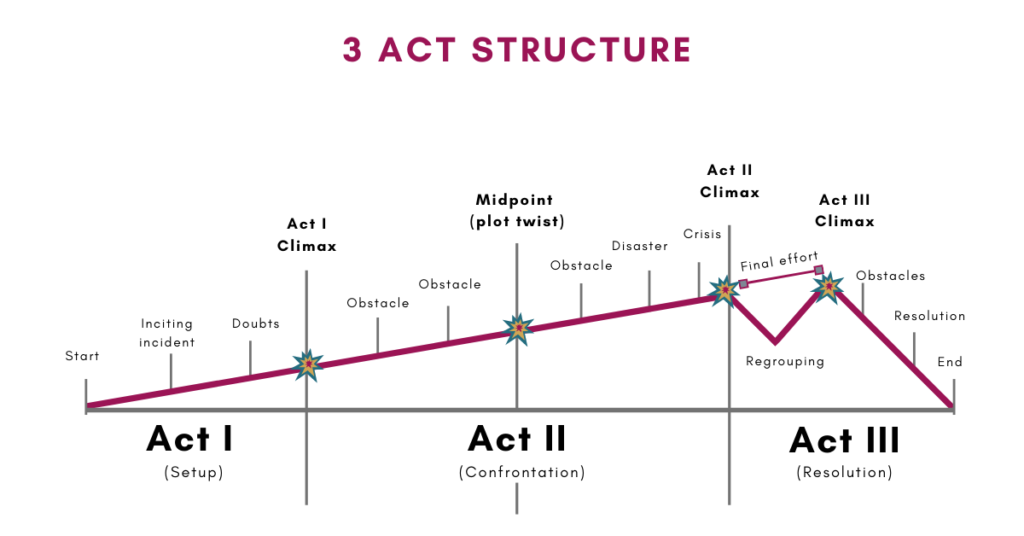Every new writer begins with the desire to tell a great story. Many of us are daunted by the by the complexity it takes to create a 200-300 pages worth of words that lead somewhere. That is why so many writers have tried to come up with formulas to explain how a story is created. And none has become as popular as the 3 Act Story. This formula is based on the premise that every story has three parts: the beginning, the middle, and the end. Each of these three acts is further subdivided into subcategories that will assist you in developing your character’s journey, arc, and plot of your story.

First Act – The Setup
Your main character has been living a normal life up until this point. Even if that life was bad, it was normal for them. This is where you will set the scene for your readers and explain to them who your character is and what a day is like in this person’s life; the world they live in; their relationships; and goals. Then out of nowhere your character’s life is disrupted (the inciting incident), and everything changes. Now comes the point where your character must choose between ignoring what happened and returning to their normal life. Or accept the call to adventure and immerse themseves in the story. Once the choice is made there is no going back.
Second Act – The Confrontation
Your character made the right choice by answering the call to adventure. But, obviously, nothing is going to be easy; otherwise, it would be over before it even began. Life/the antagonist will continue to throw obstacles in your character’s path. Your character’s resolve will be put to the test again and again. Will they fall short? Will they be successful? (Tip: it’s not entertaining to see your character win all of the time, you can make the reader fear for the character by having them lose every now and then). However, the point is that the story will develop in such a way that it will eventually reach a midpoint in your story. Things don’t go as planned, and your character is forced to change tactics or change the goal. But even though they just changed the game, obstacles keep coming up, eventually leading to its climax: the final battle stakes will be high if your character loses. This could be a battle, getting the love interest, a final operation against the disease, or anything else.
Third Act – The Resolution
This is where things may start to diverge. You could just win the final battle with one last push and bring the confrontation to a close. Alternatively, have a disaster arrive and destroy your character’s hopes and dreams. They lose morale and require time to lick their wounds and determine whether or not to quit. Suddenly, they regain their composure and find the strength to confront the antagonist once more. Act 3’s Climax should be the highest point of tension in the story, whether you chose to have one big confrontation or two.
This formula offers so many possibilities and you don’t need to follow it thoroughly. You can play with it and see what fits best to your story. But one of the reasons it’s so popular is because it works for most writers. Especially the ones who have no idea how to build a story. It also helps you figure out where you’re going with your story.
Do you know of any stories which clearly follow this structure?



